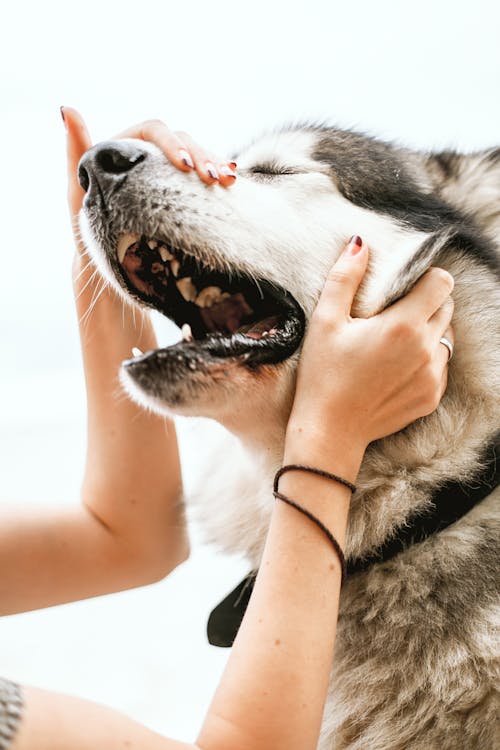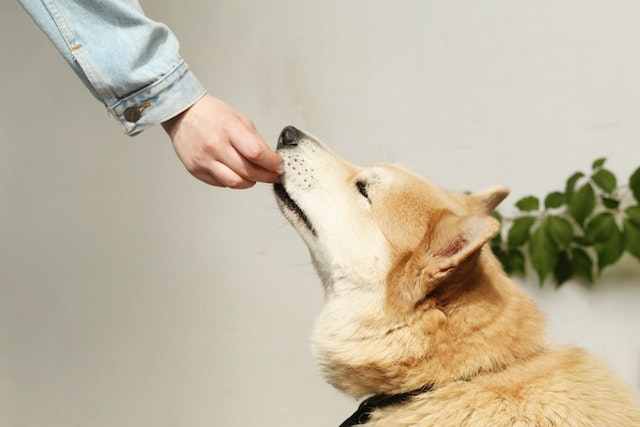1. Understanding Dog Behavior Problems
Dog behavior problems can range from mild annoyances to serious issues that require professional intervention. It is essential to remember that most behavior problems stem from underlying causes, such as fear, anxiety, boredom, or lack of proper training. Identifying the root cause is the first step toward finding an effective solution.
2. Aggression: A Challenging Issue
Aggression is a concerning behavior problem that can manifest in various ways, such as growling, snapping, or biting. Signs of aggression include showing teeth, raised fur, and stiff body posture. It is crucial to consult with a professional dog behaviorist or trainer to assess the situation and develop a management and training plan. Techniques may involve behavior modification, desensitization, and counterconditioning exercises.
3. Separation Anxiety: When Dogs Can’t Stand Being Alone
Separation anxiety is a common problem among dogs, causing distress when their owners leave them alone. Signs of separation anxiety include excessive barking, destructive behavior, and house soiling. To address separation anxiety, gradual desensitization, and counterconditioning techniques can be employed. This involves gradually increasing the time apart from the dog while providing positive reinforcement and creating a safe and comforting environment.
4. Excessive Barking: Finding the Balance
While barking is a natural means of communication for dogs, excessive barking can be disruptive and frustrating. Understanding the triggers behind excessive barking, such as boredom, fear, or territoriality, is crucial in addressing the issue. Training techniques, environmental enrichment, and positive reinforcement can be employed to manage and redirect barking behavior effectively. Providing alternative outlets for mental and physical stimulation, such as interactive toys and regular exercise, can also help reduce excessive barking.
5. Leash Pulling: Walking in Harmony
Walking your dog should be an enjoyable experience for both of you. However, if your dog constantly pulls on the leash, it can turn into a frustrating and tiresome activity. Techniques such as leash training, positive reinforcement, and teaching the dog to walk politely on a loose leash can improve leash reactivity. Using a front-clip harness or head halter can also provide additional control and make walks more manageable.
6. Fear and Phobias: Helping Dogs Overcome Anxiety
Fear and phobias can significantly impact a dog’s well-being, causing distress in various situations. Common fears include thunderstorms, fireworks, or specific objects. To help dogs overcome their fears and phobias, a gradual desensitization and counterconditioning program can be implemented. This involves exposing the dog to the feared stimulus at a low intensity while pairing it with positive experiences, such as treats or play. Seeking guidance from a professional trainer or behaviorist experienced in fear-based issues is recommended.
7. Destructive Chewing: Why Do Dogs Love to Gnaw?
Dogs explore the world through their mouths, and chewing is a natural behavior for them. However, destructive chewing can be a sign of underlying problems like teething, anxiety, or lack of mental stimulation. Providing appropriate chew toys, training the “leave it” command, and ensuring regular exercise can help redirect this behavior onto more suitable outlets. It is essential to create a dog-friendly environment by removing valuable items or using deterrent sprays on objects that should not be chewed.
8. Resource Guarding: Sharing Is Caring
Resource guarding occurs when dogs show aggressive behavior to protect their valued possessions, such as food, toys, or sleeping areas. This behavior stems from instinct and can be managed through positive reinforcement training, desensitization, and gradually teaching the dog to associate people with approaching their resources as a positive experience. Consulting with a professional trainer can provide valuable guidance in managing resource-guarding behavior.
9. Dog-on-Dog Aggression: Prevention and Management
Dog-on-dog aggression can arise from various factors, such as fear, lack of socialization, or resource guarding. Prevention is key, and early socialization with other dogs, positive reinforcement training, and proper supervision can help mitigate aggression issues. In cases where aggression has already developed, consulting with a professional behaviorist is crucial to create a behavior modification plan tailored to the specific situation and dog.
10. Helping Dogs Overcome Anxiety in New Environments or Experiences
Dogs can experience anxiety when faced with new environments or experiences. To help them overcome anxiety, gradual exposure to new situations, positive reinforcement, and creating a safe and calm environment are crucial. Using calming aids like pheromone diffusers or anxiety wraps can also provide additional support. Patience and understanding are vital in helping dogs build confidence and develop coping mechanisms to manage their anxiety effectively.
Conclusion
Understanding and addressing dog behavior problems require patience, consistency, and a deep understanding of canine psychology. By recognizing the underlying causes and employing positive training methods, dog owners can help their furry friends overcome these challenges and build a harmonious relationship based on trust and mutual respect.
FAQs (Frequently Asked Questions)
1. How long does it take to resolve a dog behavior problem?
A: Resolving dog behavior problems varies depending on the specific issue, the dog’s temperament, and the consistency of training. Some problems can be resolved within a few weeks, while others may take several months of dedicated effort.
2. Should I consult a professional for dog behavior problems?
A: If you are struggling to address your dog’s behavior problems or if the problems are severe or escalating, consulting a professional dog trainer or behaviorist is highly recommended. They can provide expert guidance tailored to your dog’s specific needs.
3. Can dog behavior problems be prevented?
A: While some behavior problems may have a genetic component, many can be prevented or minimized through proper socialization, positive reinforcement training, mental and physical stimulation, and providing a structured and loving environment for your dog.
4. Are there age limitations for addressing dog behavior problems
A: No, dog behavior problems can be addressed at any age. However, it is generally easier to modify behavior in puppies or younger dogs due to their increased ability to learn and adapt. Older dogs can still learn new behaviors and habits, but it may require more time and patience.
5. Is punishment an effective way to address dog behavior problems?
A: Punishment is generally not recommended as an effective approach to address dog behavior problems. Positive reinforcement training, which rewards desired behaviors, is considered more effective, humane, and beneficial for building a strong bond between you and your dog.















